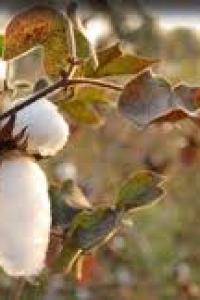The Truth About Thread Count

For several years the focus on thread count has dominated makreting in the bed linen industry. Thread count has become a simple metric used by marketing people to capture interest and impress with high numbers. Sadly, by focusing only on thread count, the customer is not always getting the best product. In fact, thread count is not even the most important quality indicator.
Sheeting quality indicators:
- Fibre quality - 100% cotton sheets are by far the most popular and widely used type of sheets. There is a huge variety in the quality of cotton sheets. The highest quality cotton is long staple cotton. Staple refers to the length of the cotton fibre; the longer the fibre the better because it creates stronger and finer yarns.
- Yarn size - The fineness of each yarn is what the term yarn size refers to – the higher the yarn size, the finer the yarn. Finer yarns allow for lighter, more supple fabric, thicker yarns a crisper, heavier feel. Higher thread counts are created with finer yarns, as more of them can be woven into a square centimetre. Also super fine yarns can be twisted together, creating 2 ply yarns that can then be woven into sheeting for a higher thread count.
- Finishing - After the cotton yarns are woven into a fabric, the fabric needs to be ‘finished’. This includes singeing and mercerising. The singeing process is vital; it burns off the tiny fuzz that can later develop into pilling on your sheets. Mercerising is a treatment conducted under tension, to increase strength, lustre and affinity for dye. Cotton sheets of lesser quality may not be singed or mercerised. High quality organic cotton sheets like our SleepFROG brand, will always be.
- Thread count and construction - thread count is simply the number of threads per square centimetre of fabric. These consist of vertical threads (warp) and horizontal threads (weft) woven together. Construction refers to how the thread count is achieved (number of warp and weft yarns, number of picks in the weft, use of 2 ply yarns etc). To achieve higher thread counts, sometimes 2 ply yarns are used or multiple yarns (picks) are inserted into the weft. In weave quality terms alone, the best fabric will be made with single ply yarns and have a single pick.
The highest thread count you can get with a single ply, single pick, long staple cotton construction, is 360. Above that, 2 ply yarns and/or multi-picks must be used. In quality products, the incremental comfort value of increasing thread count over 300 is very little, it is more a question of what “feel” you want from your sheets.
The problem with mass-produced high thread count sheets is that to keep the price down, important elements of quality might be sacrificed. An extremely high thread count cotton sheet at a very low price is most probably exactly what it sounds like: too good to be true.
What to look for:
We would like to encourage customers to focus less on thread count and more on the other quality indicators (fibre quality, yarn size, finishing and construction). We believe you will get a better, more comfortable product that truly represents quality and value.
On this site:
You can buy organic cotton sheets on this site, made by a small business in New Zealand from long staple, single ply, slightly thicker organic cotton thread, which gives durable, quality linen with a crisp, slightly weightier feel. The raw material is made with honest, internationally recognised organic, fair trade and BCI (Better Cotton Initiative) certifications, supporting local village farmers, organic fabric weavers, their families and the environment with organic farming. The linen itself is manufactured by New Zealanders in Aotearoa, for NZ bed sizes – supporting Kiwi suppliers and their families, and they have been working this way for years. Oh .. and the thread count is just under 300 NZ/Aus.
Based on excerpt taken from LinenPlace – updated 2021





